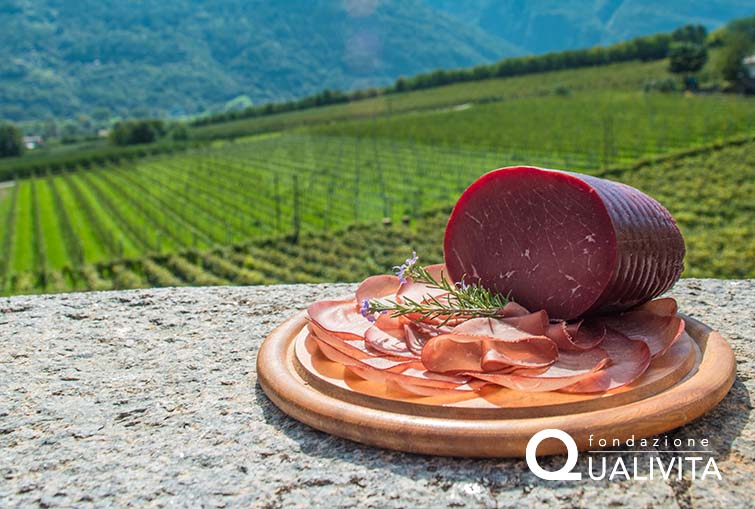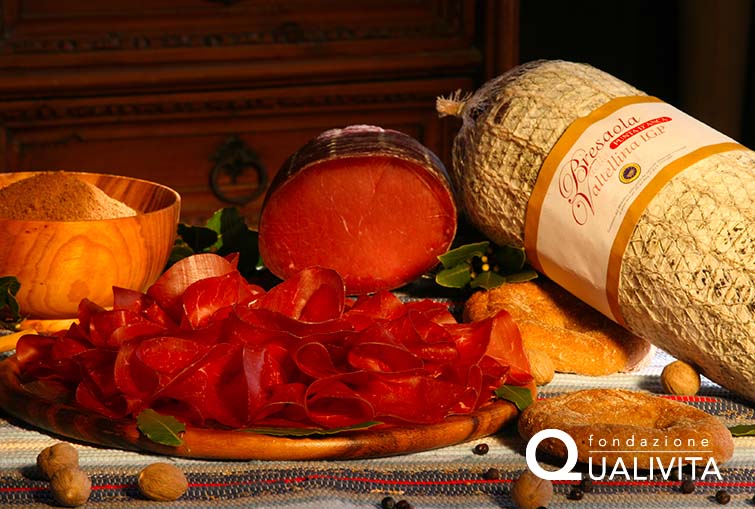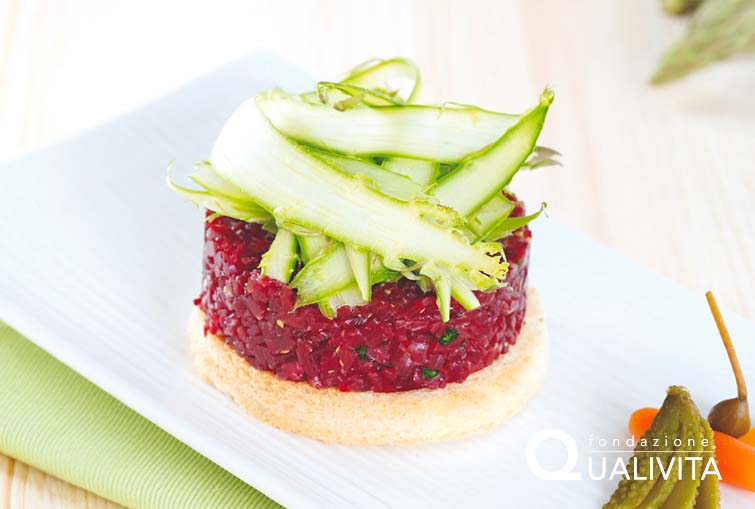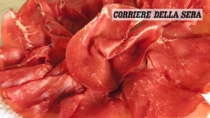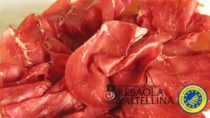Description
Bresaola della Valtellina PGI is a charcuterie product obtained exclusively from the salted and cured thigh of bovine between 18 months and four years old. It can be produced in the following varieties: Fesa (rump), Magatello (round roll), Punta d’Anca (loin), Sottofesa (top beef), Sottosso (silverside).
Production Area
The production area of Bresaola della Valtellina PGI is within the entire territory of the Province of Sondrio, in the Lombardy region.
Production Method
The meat is visually selected and trimmed before being dry salted and seasoned with salt, fresh herbs, spices and aromatic plants, depending on the producer’s recipe. It is then left to rest in brine for at least 10 days. During this period, the meat is massaged to induce more rapid and even salt distribution throughout the product. It is then stuffed into a natural or artificial casing and left to dry in special cells. The product is cured at a temperature of between 12 and 18°C, under environmental conditions that ensure a slow and gradual reduction of the moisture in the product; the storage areas are air conditioned, ensuring sufficient exchange of air. Both the drying and curing processes last for a period of four to eight weeks, depending on the size of the product and market demands.
Appearance and Flavour
Bresaola della Valtellina PGI is characterised by its bright, even red colour, with a slightly darker rim in the lean part and fine white veins in the fatty part. It has a firm and springy consistency, a mild aromatic fragrance and a pleasant and slightly sapid flavour.
History
The origins of Bresaola della Valtellina PGI date back to the late Middle Ages, when the technique of preserving beef, lamb and game through salting and drying was already diffused throughout the Alps. The origins of the term Bresaola, in the past brazaola, brisaola or bresavola, are uncertain. Although the suffix “saola” can be easily traced back to the use of salt to preserve the product, it is far more difficult to identify a single and agreed upon interpretation of the origins of the word as a whole. According to an early interpretation, the etymology can be found in the German word brasa (embers), as in the past embers were used to reheat and dehumidify the air of the curing rooms, emitting aromatic smoke that was obtained by adding juniper berries and bay leaves to the hot coals. Another interpretation is that the origin of the name can be found in the dialect term brisa, which indicates a heavily salted beef gland.
Gastronomy
A whole Bresaola della Valtellina PGI should be kept in a cool dry place, in its original packaging, and eaten fairly quickly. It is best eaten in thin slices to fully appreciate its flavour. A local traditional dish is Bresaola della Valtellina PGI “Santa”, which is served with juniper butter curls and rye bread. Thanks to its versatility, it can be used as an ingredient in a variety of recipes suitable for all occasions, from first courses to starters, salads, sandwiches and aperitif snacks.
Marketing
The product is marketed as Bresaola della Valtellina PGI, in the following typologies: Fesa, Magatello, Punta d’Anca, Sottofesa, Sott’osso. It is sold loose or vacuum-packed, in pieces, large slices or thinly sliced in vacuum or modified atmosphere packaging.
Distinctive Features
Bresaola di Valtellina PGI is characterised by its high protein content, very low-fat content and low caloric intake. Thanks to its unique characteristics, it is also able to provide amino acids in quantities similar to those recommended to supplement an athlete’s diet.





